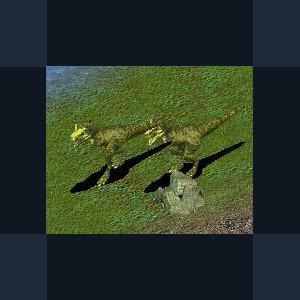About This File
Dryptosaurus (meaning "tearing lizard") was a genus of primitive tyrannosaur that lived in Eastern North America during the Maastrichtian stage of the Late Cretaceous period.
An early painting of Dryptosaurus aquilunguis by Charles R. Knight illustrated fossil remains of Dryptosaurus aquilunguis. Dryptosaurus was 6.5 m long, 1.8 m high at the hips, and weighed about 1.2 tons. Like its relative Eotyrannus, it had relatively long arms with three fingers. Each of these fingers was tipped by a talon-like 8 inch claw.
In 1866, an incomplete skeleton (ANSP 9995) was found in New Jersey by workers in a quarry. Paleontologist E.D. Cope described the remains, naming the creature "Laelaps" ("storm wind", after the dog in Greek mythology that never failed to catch what it was hunting). "Laelaps" became one of the first dinosaurs described from North America (following Hadrosaurus, Aublysodon and Trachodon). Subsequently, it was discovered that the name "Laelaps" had already been given to a species of mite, and Cope's lifelong rival O.C. Marsh changed the name in 1877 to Dryptosaurus.
Before the discovery of Appalachiosaurus,it was classified in a number of theropod families. Originally considered a megalosaurid by Cope, it was later assigned to its own family (Dryptosauridae) by Marsh, and later found (through phylogenetic studied of the 1990s) to be a coelurosaur, though its exact placement within that group remained uncertain. The discovery of the closely related (and more complete) Appalachiosaurus made it clear that Dryptosaurus was a primitive tyrannosauroid.



Recommended Comments
There are no comments to display.
Create an account or sign in to comment
You need to be a member in order to leave a comment
Create an account
Sign up for a new account in our community. It's easy!
Register a new accountSign in
Already have an account? Sign in here.
Sign In Now